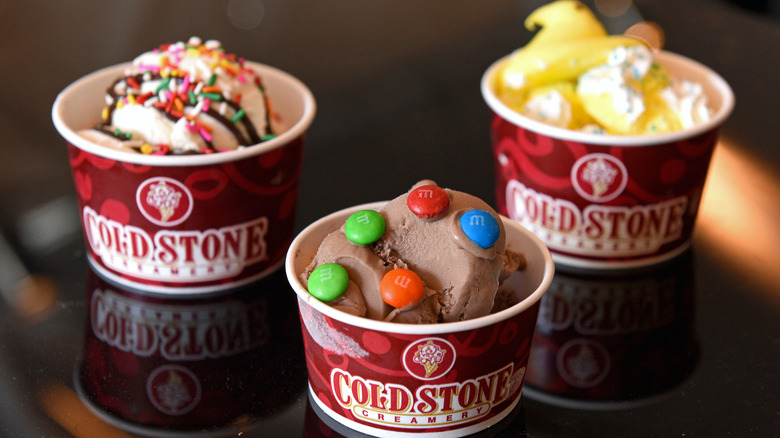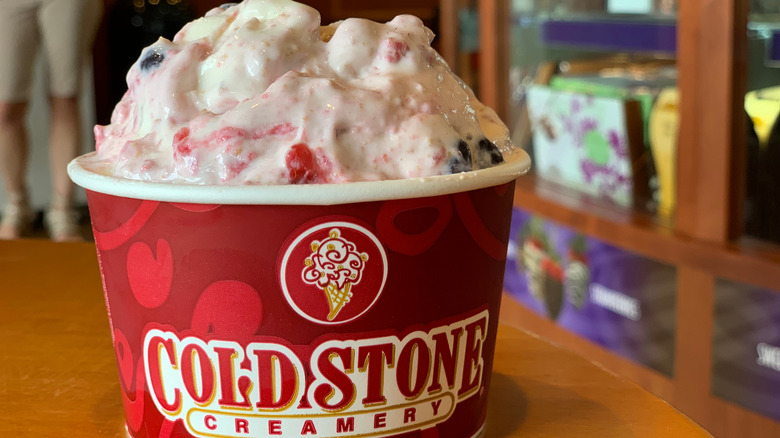Cold Stone's Higher Milk Fat Content And Mixing Protocol Give It A Unique Taste
Since it was founded in 1988 by Donald Sutherland — not the Canadian actor, but an Arizona ice cream enthusiast — Cold Stone Creamery has become well-known for, well, its cold stones. Each location does indeed have a large granite stone that's kept at a cool 16 degrees so workers can hand-mix candy, fruit, and other goodies. But true fans of Cold Stone know its desserts are unique thanks to more than the mix-ins. In fact, the ice cream is considered "superpremium." There are two reasons it's so rich and has such a distinctive taste: Firstly, the milkfat percentage is higher, and secondly, it's mixed more quickly.
Even if you don't realize it, you already know the impact milkfat makes: It's the real difference between regular ice cream and soft-serve, which has a lower fat content. Across the ice cream industry, the average milkfat content in ice cream is about 10%. But at Cold Stone, it's about 14% — and that makes a serious difference. Due to the interaction between fat molecules and aromatic compounds, fat plays a significant role in boosting our perception of flavor. It also helps stop ice crystals from forming, which serves to keep ice creams smoother in texture and slower to melt in our mouths.
And while Cold Stone may be known for the mixing that happens before our eyes, there's another reason their ice cream is so good: Behind the scenes, the batter is mixed more quickly than at other creameries.
Why Cold Stone's most important mixing happens behind-the-scenes
All Cold Stone flavors start with one of four bases; most utilize the company's sweet cream mix. And yes, it's possible to make Cold Stone-style ice cream at home — but even using the same ice cream base, with its high fat content, isn't enough on its own to produce the chain's trademark buttery-rich treat. The way Cold Stone employees mix the ice cream base before freezing it can make or break the final product.
In order for an ice cream base to freeze properly, air needs to be incorporated into it. The level of air whipped into ice cream base is called overrun, and it has a significant impact on texture. Overmixed ice cream with too much air can turn out fluffy and rather flavorless; not enough air and the final product will be too solidified to enjoy.
To nail the texture, employees at Cold Stone mix their batter for precisely 10 minutes, so less air is incorporated than at traditional creameries. So if ever you find yourself at Cold Stone — perhaps on a Monday because, judging from the claims of a self-professed former employee, it's a secret Cold Stone rule that the ice cream is freshest then — you'll know the two secrets behind the ice cream's trademark density.

